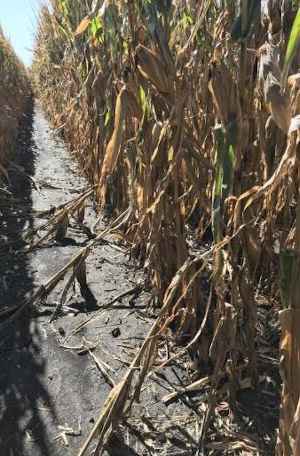By Meaghan Anderson and Alison Robertson
The challenges of this growing season continued this month when a storm front brought more than 3 inches of rain to much of the state. While the rainfall was welcome for pastures and cover crops, it added to the challenges in corn fields, especially those suffering from drought and the derecho. The rainfall, followed by warm temperatures, will further predispose the stressed corn plants to issues like stalk rots and ear rots. This blog will briefly touch on concerns with stalk rots in corn fields this fall, scouting methods for stalk rots, and resources for identifying stalk rots.
Field agronomists across the state noted in our Monday teleconference that the corn appeared to lose significant standability following the continued rainfall last week. As we near harvest, farmers should monitor fields that will be harvested for standability. Checking fields to help prioritize those with significant stalk rot for earlier harvest can reduce harvest losses, reduce the stress of slow harvest, and reduce future issues with volunteer corn.

Checking corn fields for standability issues can reveal potential problems and help prioritize fields for harvest.